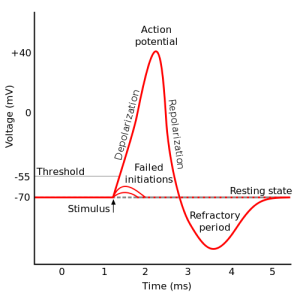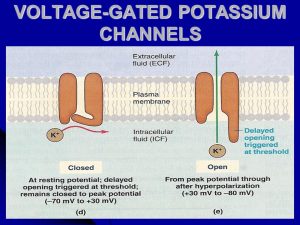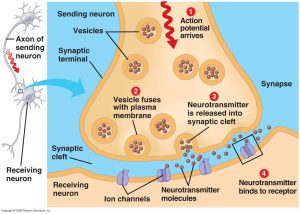The relative refractory period is the time frame in which it is more difficult than normal to fire an action potential. An action potential can be fired, but the neuron requires a greater stimulus. This period occurs when the cell is hyperpolarized. Therefore, a new signal will have to overcome the gap between the resting and threshold potentials along with the amount the cell is hyperpolarized. This period ends when the sodium-potassium pumps return the cell to resting potential. Compare to: absolute refractory period.

(“Refractory period”)




